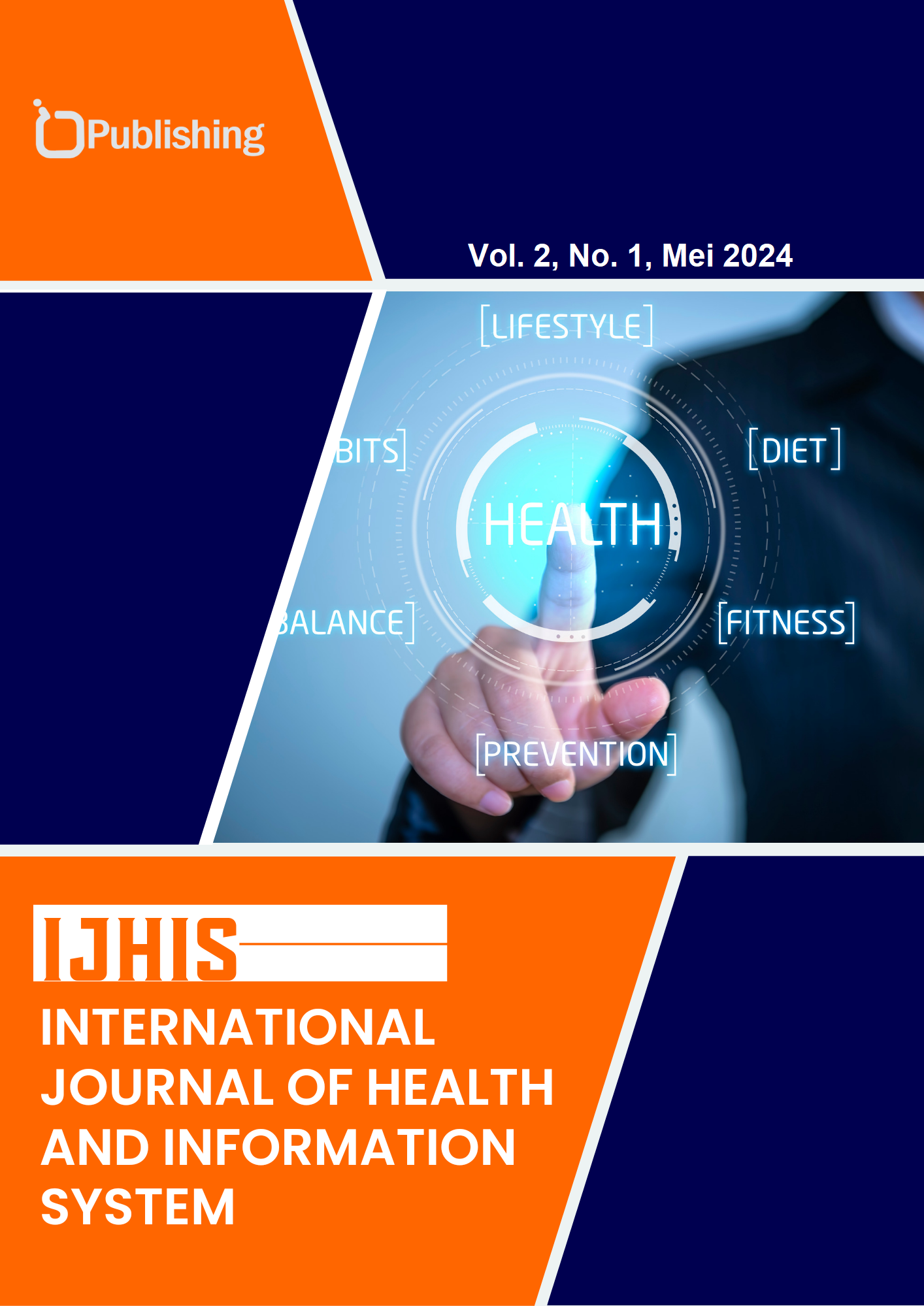Cardiac Tamponade in a Chronic Renal Failure Patient with Suspicion of Dialysis Pericarditis: A Case Report
DOI:
https://doi.org/10.47134/ijhis.v2i1.39Keywords:
pericardial effusion, cardiac tamponade, chronic renal failure, pericarditisAbstract
Pericardial effusion is a condition characterized by fluid accumulation in the pericardial cavity. This fluid accumulation can cause disturbances in cardiac contractility, affecting hemodynamic stability. Fluid accumulation is caused by several factors, ranging from the amount of fluid, the speed of fluid accumulation, and the ability of the pericardium to accommodate fluid. One of the causes of pericardial effusion is pericarditis. Pericarditis can be caused by infection and non-infection, such as in patients with chronic renal failure with an incidence of 2-21%, which can lead to cardiac tamponade. In this study, a 46-year-old male patient who came to the emergency room of Dr. Soebandi Hospital, Jember with complaints of shortness of breath in the last 2 months. The patient also complained of heartburn. The patient had a history of chronic renal failure and routinely performed hemodialysis. On examination of vital signs, thoracic photographs, and echocardiography, a picture of cardiac tamponade was found. Cardiac tamponade can occur in patients with chronic renal failure. This is due to the condition of uremia which causes pericarditis. Inflammation of the pericardium causes blood that is intravascular to enter the pericardial cavity, causing fluid accumulation there. If not treated immediately, it can lead to cardiac tamponade which endangers the patient's life.
References
Yacoub, M. B. S. Q. Rodriguez and K. Mahajan, Constrictive-Effusive Pericarditis, Las Vegas: StatPearls Publishing, 2021.
Schusler, R and S. L. Meyerson, “Pericardial Disease Associated with Malignancy,” Current Cardiology Reports, vol. 20, no. 10, p. 92, 2018.
Khan, H. A. R., J. A. Gilani, M. B. Pervez, S. Hashmi and S. Hasan, “Penetrating Cardiac Trauma: A retrospective case series from Karachi,” Journal Of Pakistan Medical Association, vol. 68, no. 8, pp. 1285-1287, 2018.
Imazio, M and G. M. De Ferrari, “Cardiac tamponade: an educational review,” European Heart Journal, pp. 1-9, 2020.
Rosansky, S. J., J. Schell, J. Shega, J. Scherer, L. Jacobs, C. Couchoud, D. Crews and M. McNabney, “Treatment Decisions for Older Adults with Advanced Chronic Kidney Disease,” BMC Nephrology, vol. 18, no. 200, pp. 1-10, 2017.
Adler, Y., P. Charron, M. Imazio, L. Badano, G. Barón-Esquivias, J. Bogaert and A. Brucato, “2015 ESC Guidelines for the diagnosis and management of pericardial diseases: The Task Force for the Diagnosis and Management of Pericardial Diseases of the European Society of Cardiology (ESC),” European Heart Journal, vol. 36, no. 42, pp. 2921-2964, 2015.
Mactier, R., N. Hoenich and C. Breen, “Renal Association Clinical Practice Guideline on Haemodialysis,” Nephron Clinical Practice, vol. 118, no. 1, pp. 241-286, 2011.
McGuire, S. E. J. Horton, D. Renshaw, A. Jimenez, N. Krishnan and G. McGregor, “Hemodynamic Instability during Dialysis: The Potential Role of Intradialytic Exercise,” BioMed Research International, vol. 2018, pp. 1-11, 2018.
Correa, S, J. K. Pena-Esparragoza, K. M. Scovner and F. R. Mc Causland, “Predictors of Intradialytic Symptoms: An Analysis of Data From the Hemodialysis Study,” American Journal of Kidney Diseases, vol. 76, no. 3, pp. 331-339, 2020.
Rehman, K. A., J. Betancor, B. Xu, A. Kumar, C. G. Rivas, K. Sato, L. P. Wong, C. R. Asher and A. L. Klein, “Uremic Pericarditis, Pericardial Effusion, and Constrictive Pericarditis in End-stage Renal Disease: Insights and pathophysiology,” Clinical Cardiology, vol. 40, no. 10, 2017.
Lee, M.-J., I. Park, H. Kim, G.-T. Shin and J. C. Jeong, “Preexisting Comorbidities are Associated with the Mortality Rate as well as the Predialysis Adverse Events in Incident Dialysis Patients,” Kidney Research and Clinical Practice, vol. 40, no. 3, pp. 419-431, 2021.
Neves, P. D. M. d. M., F. C. Lario, S. Mohrbacher, B. M. C. Ferreira, V. A. H. Sato, É. S. Oliveira, L. V. B. Pereira, A. M. Bales, L. L. Nardotto and J. N. Ferreira, “Dialysis-related Constrictive Pericarditis: Old enemies may sometimes come back,” Brazilian Journal of Nephrology, pp. 1-5, 2021.
Awan, A., F. Tiruneh, P. Wessly, A. Khan, H. Iftikhar, S. Barned and D. Larbi, “Acute Pericarditis: Descriptive Study and Etiology Determination in a Predominantly African American Population,” Cureus, vol. 9, no. 7, 2017.
Rehman, K. A., J. Betancor, B. Xu, A. Kumar, C. G. Rivas, K. Sato, L. P. Wong, C. R. Asher and A. L. Klein, “Uremic Pericarditis, Pericardial Effusion, and Constrictive Pericarditis in End‐stage Renal Disease: Insights and Pathophysiology,” Clinical Cardiology, vol. 40, no. 10, pp. 839-846, 2017.
Downloads
Published
How to Cite
Issue
Section
License
Copyright (c) 2024 Pipiet Wulandari, Suryono, Aris Prasetyo, Jauhar Firdaus, Kristianingrum Dian Sofiana, Laksmi Indreswari, Adelia Handoko, Bagus Setia

This work is licensed under a Creative Commons Attribution-ShareAlike 4.0 International License.







